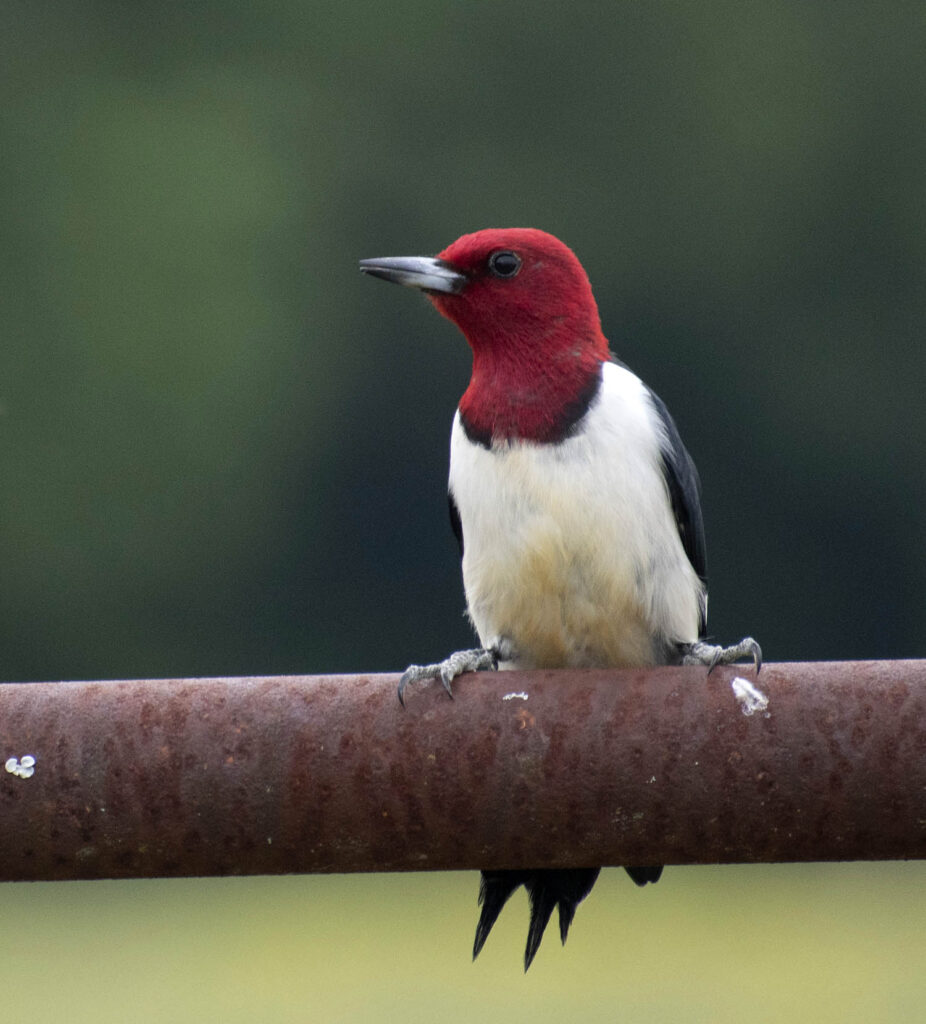
by Grace Huffman
This month I wanted to talk about one of my favorite birds. I’m not sure I could pick just one species to be my absolute favorite, but Red-headed Woodpeckers are up there. While not as common as some of our other woodpecker species, I’ve still seen them all over the state, from the panhandle to Red Slough, and especially in the Wichita Mountains. Locally I’ve had the most success finding them at Arcadia, Lake Stanley Draper, and Lake Thunderbird.
Red-headed Woodpeckers are striking birds. Like their name suggests adults have a bright red head, as well as bold black and white wings with a white belly. Juveniles have a brown head and some markings in the white patches on their wings. They are about the size of a robin, and unlike most woodpeckers they are adept at catching bugs out of midair like flycatchers. They also like acorns and nuts, and may visit your suet feeder or eat fruit if you provide any for the birds. Outside of Oklahoma they breed as far north as southern Canada, as far west as Montana, and as far south as Texas. In the northern parts of their range they move south after the summer. This includes the Oklahoma panhandle, but you can find them year-round in the rest of the state. They nest in dead trees or trees with large dead branches where there is a lot of open space around the tree. They also nest in telephone poles, but have a higher success rate in older poles vs. newer poles. The reason for this is thought to be the creosote used to preserve the poles. They will have 1-2 broods in a year, and it takes over a month and a half for the babies to fledge. Red-bellied Woodpeckers have also been known to re-use nest sites for several years.
Red-headed Woodpeckers are considered a watch species. They are not currently endangered, but have experienced a 70% population decline from 1966-2014. This is largely due to habitat loss & loss of food sources. Management of dead trees & snags can be very beneficial to this species. They certainly seemed to be thriving down near Red Slough earlier this spring, as they were everywhere one evening! This one stayed very close allowing me to get some great photos from the car. Happy birding!
(Sources: allaboutbirds.org. Sibley, & Wikipedia)
